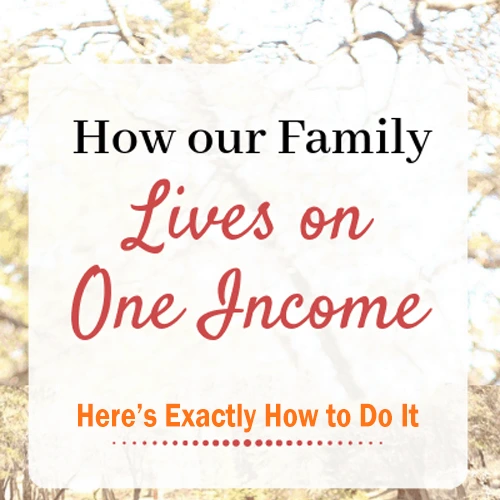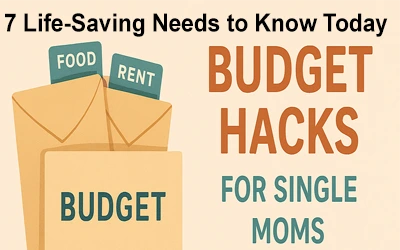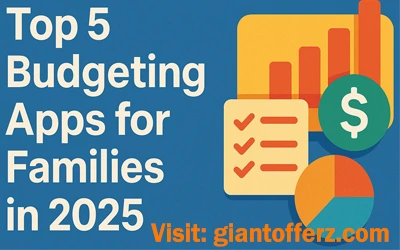
How to Live On One Income
How to Live on One Income and Still Save Money Every Month
Let’s be real. Living on one income isn’t just a budgeting issue — it’s an emotional and lifestyle shift.
Maybe you or your partner lost a job. Or you made a conscious choice to have one parent stay home.
Either way, surviving on a single paycheck in this year feels like climbing uphill — especially when everything costs more, from rent to rice.
But there’s good news.
Thousands of families do it. Some even thrive.
The key isn’t earning more — it’s managing what you already have, wisely.
So, how do you live on one income and still save? Let’s break it down step by step — with no fluff, just real answers.
How to Live On One Income
budget excel template
Step 1: Get Clear on the True Cost of Living
First things first. You need to know what your life actually costs — not what you think it costs.
Here’s a simple example budget for a family of 3 living in a mid-size U.S. city on a $3,000/month income:
Category | |
Rent/Mortgage | $1,100 |
Utilities (Gas, Elec) | $150 |
Internet & Phone | $90 |
Groceries | $450 |
Transportation | $200 |
Insurance (Health/Car) | $300 |
Childcare/School | $150 |
Other (Debt, etc.) | $200 |
Savings | $150 |
Total | $2,790 |
The goal is to spend less than 90% of your income — even when it’s tight.
Use free tools like:
- EveryDollar (zero-based budgeting)
- Mint
- Or just Google Sheets — track every cent.
Step 2: Slash Your Grocery Bill Without Starving
Groceries are flexible — which means you control them.
No, you don’t have to live on ramen. But you do need to plan smarter.
Try These Strategies:
- Make 7-day meal plans around sale items
- Cook once, eat twice: Freeze soups, pasta, stews
- Use local store apps (like Walmart, Target Circle) to scan deals
- Buy in bulk (beans, rice, flour) and split with a friend
- Use “ugly produce” services like Misfits Market
Real Savings Example:
A family saving $25/week on groceries = $100/month = $1,200/year.
Add Your Heading Text Here
Step 3: Reevaluate Childcare Costs (The Silent Budget Killer)
Childcare can eat up $500–$1,000/month easily.
If one partner stays home, that’s already a massive saving — but what if you still need part-time care?
What You Can Do:
- Swap care with trusted neighbors (1 day you watch, next day they do)
- Use church/community drop-in care (cheaper per hour)
- Involve grandparents or siblings if nearby
Some families reduce childcare costs by 50%+ this way.
Step 4: Tap Into Real Government Help (That People Often Miss)
Living on one income often means qualifying for programs that help you stay afloat.
Key U.S. Assistance Programs:
- SNAP: Supplemental Nutrition (food stamps)
- WIC: Help for moms & kids under 5 (formula, baby food, etc.)
- Medicaid: Free or low-cost health insurance
- LIHEAP: Utility bill assistance
- School Lunch/Breakfast Programs: Free meals for eligible kids
- Tax Credits: Earned Income Tax Credit (EITC), Child Tax Credit
Don’t feel guilty for using these.
They exist for people exactly like you.
Step 5: Eliminate Lifestyle Creep
When you had two incomes, maybe you said yes to:
- Subscription boxes
- $60/month streaming bundles
- Weekly takeout
- Amazon splurges
Now? It’s time to go lean. Do This Now:
- Cancel everything you haven’t used in 30 days
- Pause auto-orders
- Use YouTube for entertainment
- Batch cook to avoid “emergency takeout”
You’re not depriving yourself. You’re choosing peace.
Smart saving on a single income
Step 6: Be Strategic with Debt (Don’t Ignore It)
If you’re carrying debt, don’t panic. But don’t hide from it either.
- Contact creditors — ask for lower interest or hardship programs
- Use debt avalanche method: Pay off highest interest first
- Avoid using credit cards unless absolutely necessary
Try nonprofit help like:
- NFCC.org – free credit counseling
Step 7: Save Money by Using Your Time (Instead of Spending)
Time is money. If one partner is home more — they can do more.
Examples:
- Bake instead of buy
- Cut hair at home
- Deep clean instead of hiring help
- Do oil changes yourself (YouTube is your friend)
Every hour you spend saving, is like earning.
Step 8: Still Want Extra Cash? Try Light, Flexible Side Hustles
Just because you’re on one income doesn’t mean you can’t make more — on your own time.
Easy-to-start options:
- Sell old clothes/toys on Facebook or Mercari
- Babysit for neighbors during weekends
- Offer virtual help (transcription, scheduling, email handling)
- Do surveys & offers on reward platforms
GET $1,000 Cash Reward Now
If you’re short on money but have a phone — this can help.
What’s the Deal?
This $1,000 bonus is part of a reward system where users complete simple tasks (apps, surveys, free trials). Once you reach the goal points, the amount is deposited to your Cash App, PayPal, or gift card.
No scam. No credit card needed (for most tasks).
You can stop anytime — and many users earn in under 1 hour.
Steps to Redeem:
- Click the “Claim $1000 Cash Reward”
- Enter your email and sign up
- Choose your tasks and start completing
- Watch your balance grow — and cash out once done
👉 [GET $1,000 Cash Reward Now – Offer live for a limited time only
The True Asset in a One-Income Life
Let’s be honest again.
You’ll feel fear. Maybe shame. Maybe guilt when your friends are going on trips or upgrading phones.
But here’s the truth:
This life you’re building — with intention, sacrifice, and heart — is stronger than any luxury.
Celebrate small wins:
- Paid a bill early? That’s a win.
- Came under grocery budget? That’s a win.
- Spent the weekend without spending a dime? Huge win.
You are not failing. You are growing.
Thriving on a single income guide
Frequently Asked Questions
Q. What is the 70/20/10 rule money management?
Answer: Brother, 70/20/10 is actually a simple rule that tells everyone how to divide money. For example, if you earn $1,000 a month, then you will spend $700 of it on monthly basic items that you cannot live without — rent, food, electricity, etc. Then put $200 in savings or debt repayment. And spend the remaining $100 on whatever you want — like a small phone or coffee at a cafe. This is not a strict rule, but rather a guideline that helps you maintain a proper balance.
Q. How to live on a tiny budget without feeling deprived?
Answer: I know it is quite stressful to have a tight budget, but the main thing is to know where your money is being spent and where it is not going. Cut out small things, such as buying unnecessary sweets and juices, and reduce going to the movies. Plan for meals, buy cheap things and cook. If you can reduce entertainment costs, read books from the library, go to free community events. It’s not that hard, just be a little careful.
Q. What is the 50/20/30 budgeting rule and how does it help?
Answer: This 50/20/30 rule is a simple formula, where 50% of the money goes to urgent expenses, 20% to savings and 30% to spend as you wish. This is very useful for a single-income family because it is flexible, does not put too much pressure, and sets a limit on expenses. You know, how to balance expenses without being too strict — this is the big plus of this rule.
Q. How can I live on the least amount of money while covering basics?
Answer: To be honest, if you want to live on less money, you need to prioritize the most essential things — like housing, food, and electricity. You need to reduce other expenses as much as possible. You can share a house, save on food by buying in large packages. If you don’t have a car, use public transportation. And find out if there are government programs to help. Stop buying new things, always use old ones as much as possible.
Q. How do single-income families save money every month?
Answer: It is possible to save money every month from one income, but it is through planning and discipline. Create a budget, write down your expenses. Stop buying things you don’t need. Look for deals, coupons. If you can, do small side jobs that don’t take up too much time. Develop the habit of putting some money in a savings account at the end of the month. Little by little, small savings grow.
Q. What government programs help families living on one income?
Answer: There are many government programs in America that help single-income households. For example, SNAP (food stamps) provides food. WIC is for mothers and young children. Medicaid provides cheap or free healthcare. LIHEAP covers heating and utility bills. There is also a free school lunch program. Tax credits are also a big help for many.
Q. How does meal planning save money for single-income households?
Answer: Meal planning saves a lot of money. Before you go shopping, you think about what you will cook, so you don’t buy unnecessary things. You can cook together and put the rest of the food in the refrigerator to eat later. You can find out if there are discounts or sales from vendors. Buying large packages costs less. This way, you will waste less food and save money.
Q. What are some ways to reduce childcare costs on one income?
Answer: To reduce the cost of children, you need to think about family or community support. You can share the time spent with your neighbors. Churches or community centers have cheap places to indulge. You can ask grandparents, aunts, and uncles for help if they live nearby. And by adjusting your work hours, even if one person spends more time with the kids, the costs can be lower.
Q. Why is it important to avoid lifestyle creep on one income?
Answer: When income is low, the biggest risk is lifestyle creep. If you add up your expenses little by little, you won’t have any money at the end of the month. You need to cut back on subscriptions, restaurants, and purchases. You need to understand the difference between your needs and wants. Reducing your expenses and increasing your savings will make you feel more comfortable in the future and reduce stress.
Q. What are some easy side hustles for those living on one income?
Answer: A side hustle is not complicated, something you can do on your own time. You can sell old things online, do surveys, babysit at home, or do freelance work. You can do delivery or ridesharing if you have time. These don’t take much time and increase your income.
Final Takeaways: Live on One Income Without Losing Yourself
Build a realistic monthly budget
Slash grocery & childcare costs
Eliminate lifestyle leaks
Use your time to save more
Apply for the help you qualify for
Add light side income with survey/offers
Keep your emotional balance strong
You can live well — even better — on one income.
average family income
Living comfortably on one income for families
Budgeting tips for single-income households
How to manage expenses on one salary
How to Live On One Income



